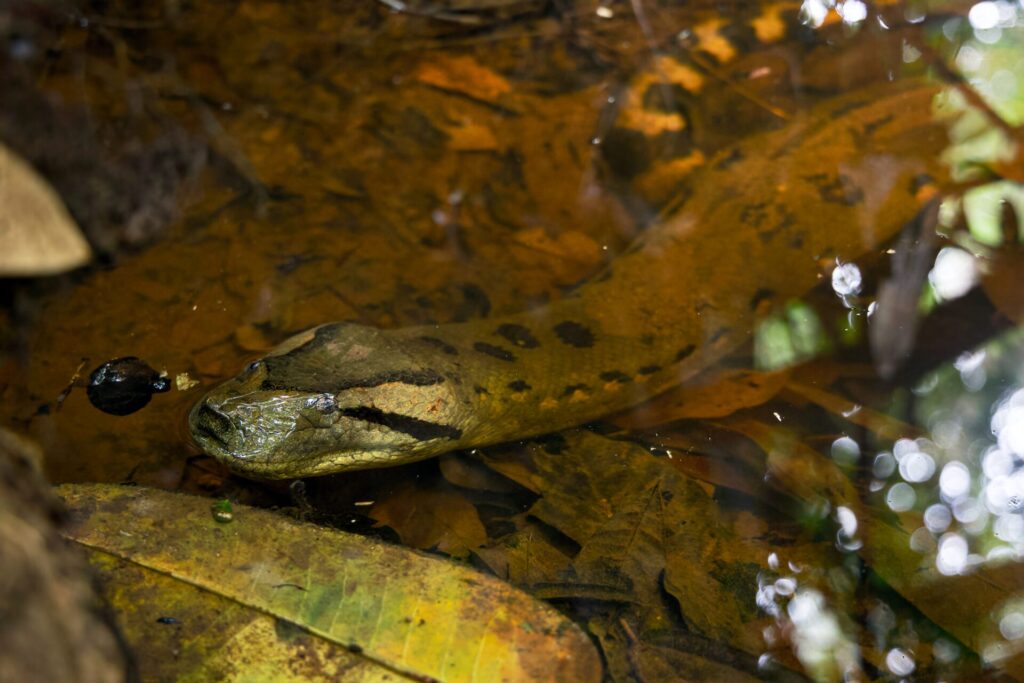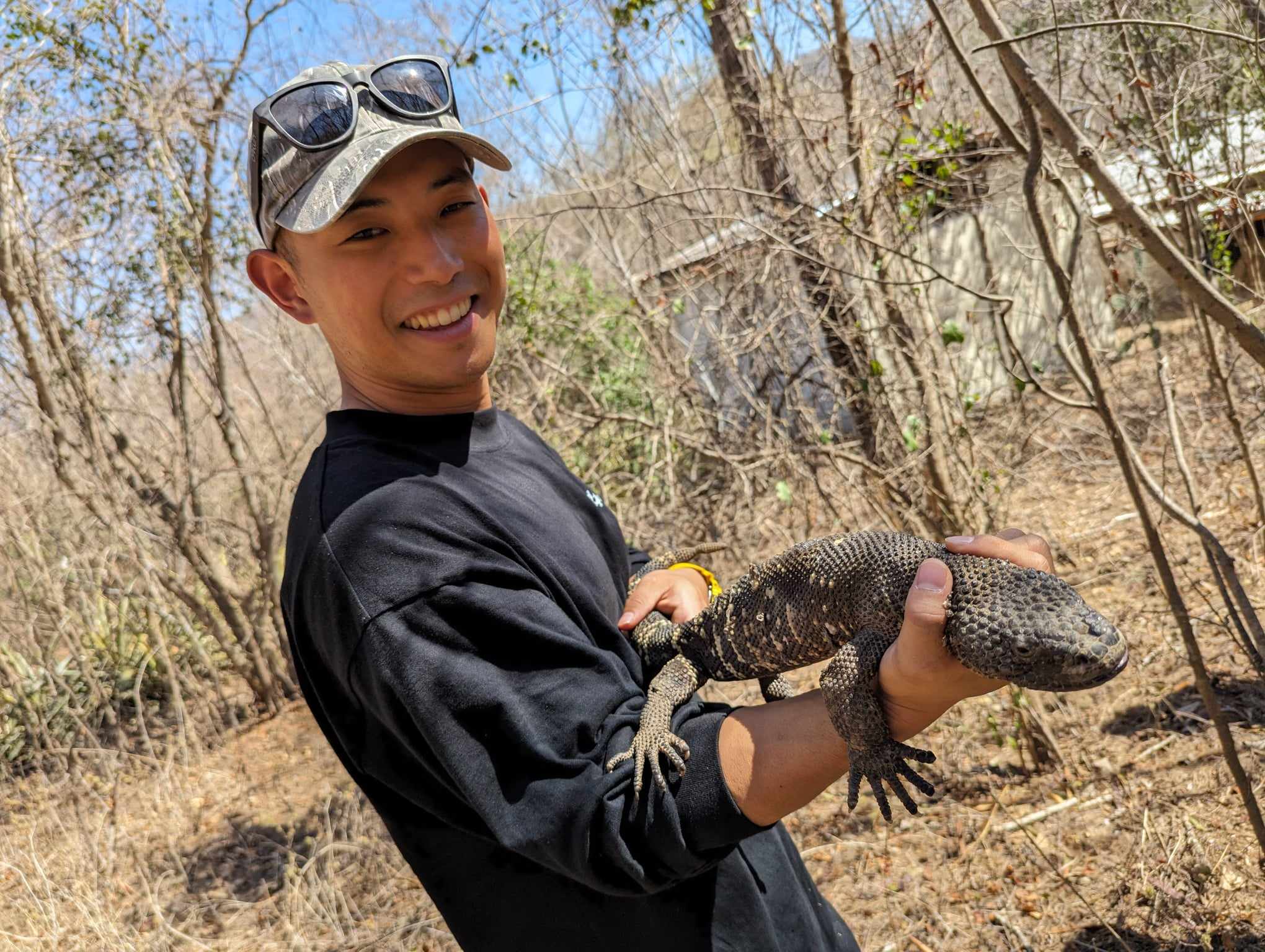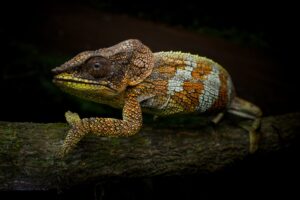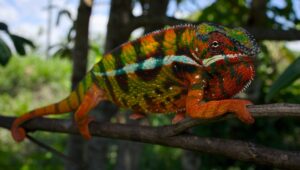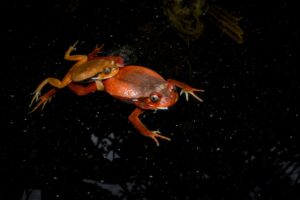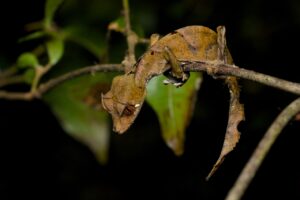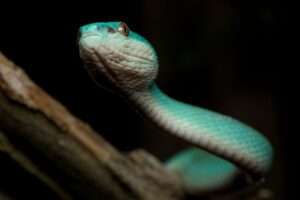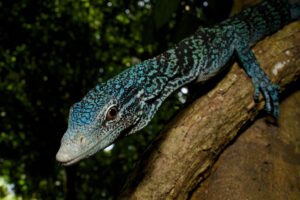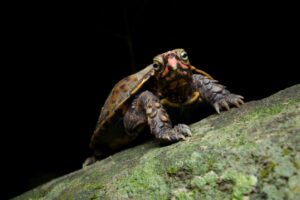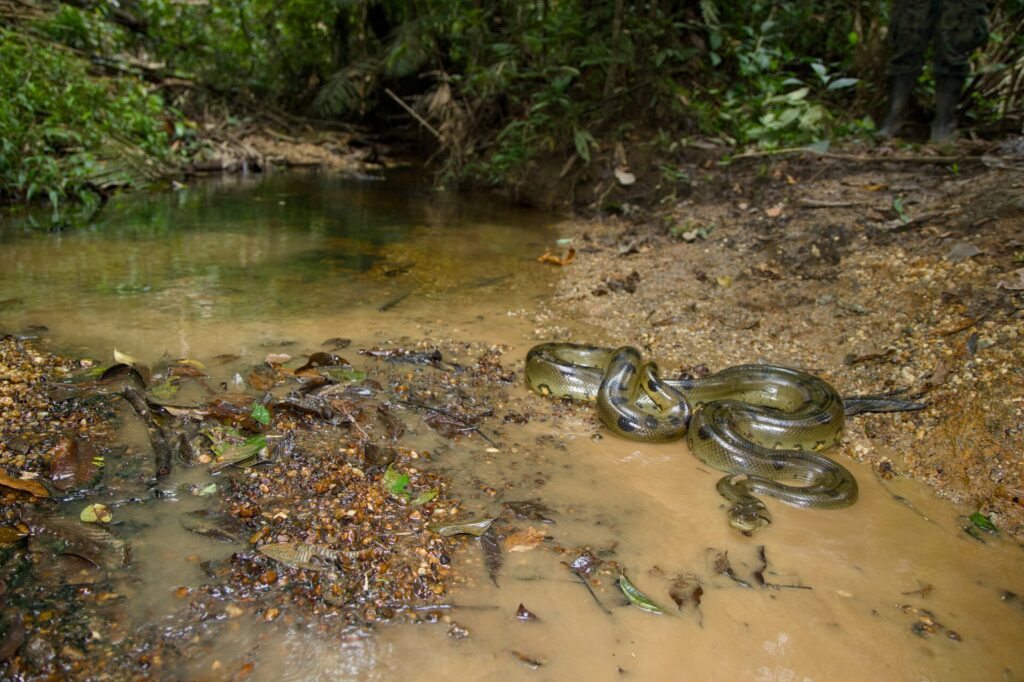
The Green Anaconda (Scientific Name:Eunectes murinus ) is known as the largest snake in the world. While it may be shorter than the Reticulated Python, it is undoubtedly one of the most famous snakes globally, thanks in part to its portrayal in popular films.
However, encountering an anaconda in the Amazon rainforest is not easy. I hope this article serves as a helpful guide for those who plan to search for one.
Feature ① Preference for Water Habitats
Due to its massive body, the anaconda does not favor movement on land. In the wild, it often moves by swimming through rivers, swamps, and even small pools of water.
The Amazon consists of diverse environments. While riverbanks are obvious locations, anacondas may also inhabit small water pools hidden within densely forested jungle areas.
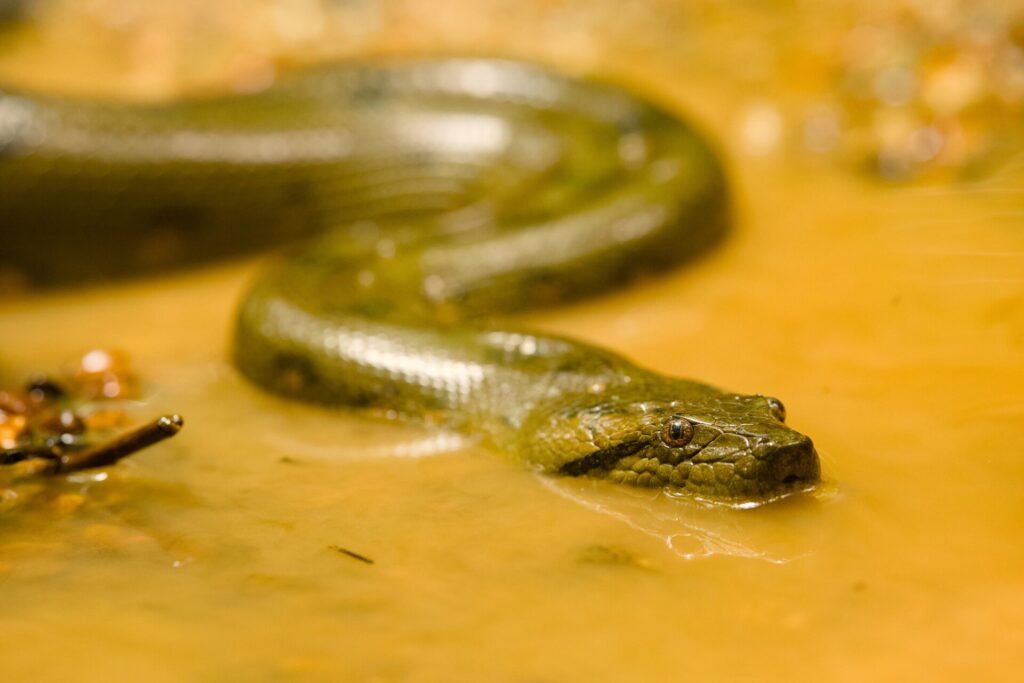
Feature ② Ambush Hunting in Mammal-Rich Areas
Larger anacondas tend to prefer mammals as their primary food source. As a result, they often ambush prey in areas frequented by mammals.
The individual I observed was lurking just behind a clay lick, a site where mineral-rich soil is exposed. It is likely that this anaconda was waiting for mammals that visit the clay lick to consume minerals.
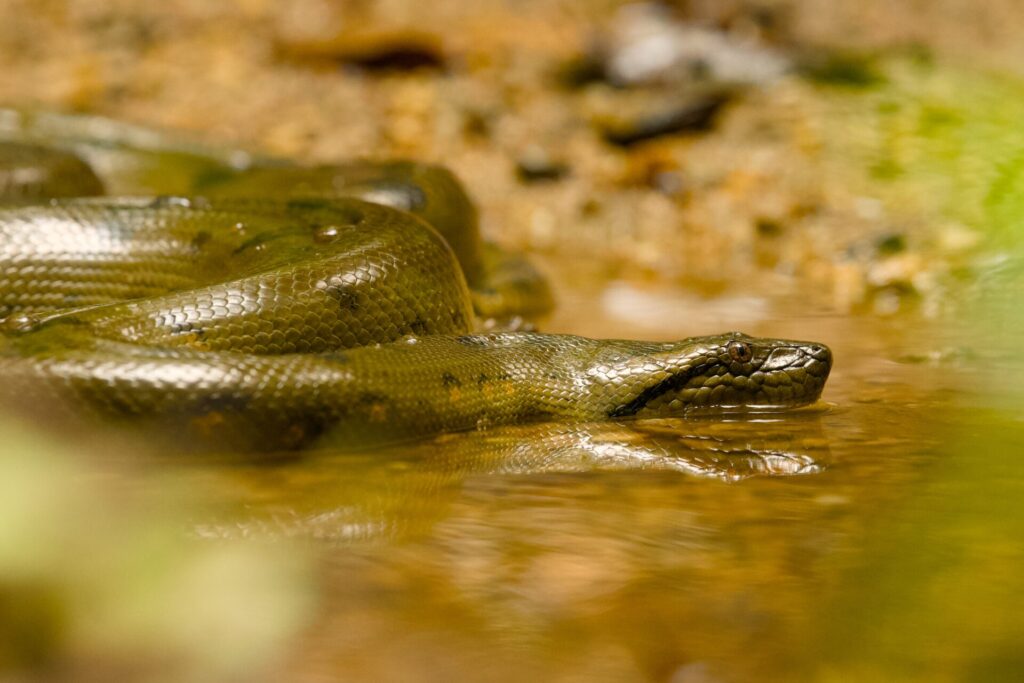
Feature ③ Camouflage and Ambush Strategies
The anaconda’s body features an irregular pattern of round spots. While these markings stand out beautifully on land, they provide excellent camouflage on the leaf-covered riverbed.
Additionally, its eyes and nostrils are positioned on the upper part of its head, allowing it to keep only these features above water while waiting for prey. Such adaptations increase the chances of encountering an anaconda in these environments.
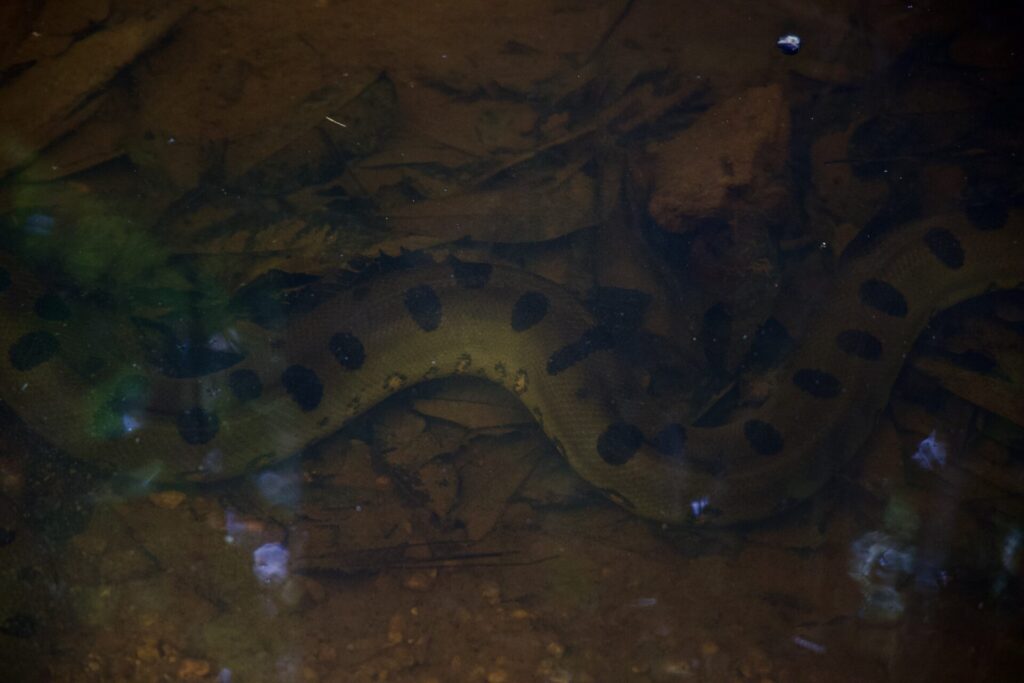
Conclusion
Observing a wild anaconda is by no means an easy task. However, with proper preparation, the likelihood of an encounter can be significantly increased.
A close encounter with a magnificent anaconda in the Amazon jungle is a once-in-a-lifetime experience. If you ever visit the Amazon, I encourage you to search for one!
